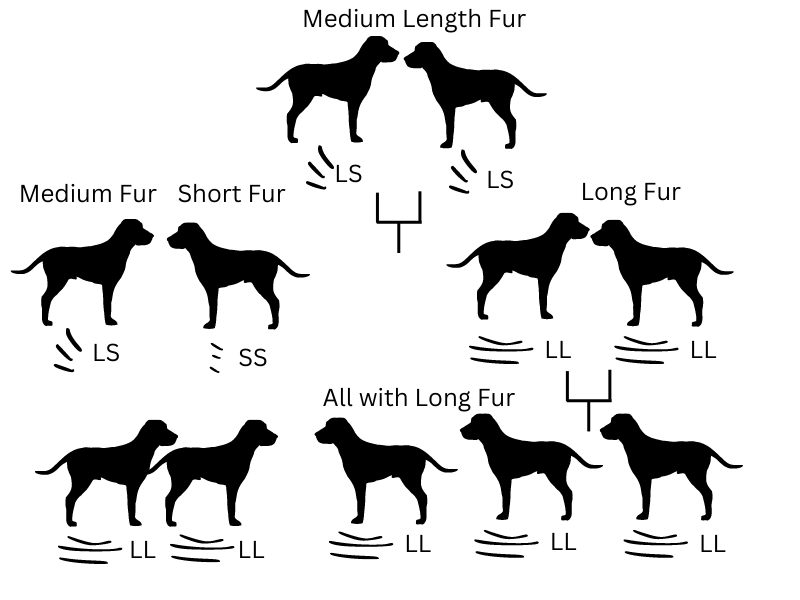The evidence for creation by God is all around us.
“The heavens declare the glory of God;
the skies proclaim the work of His hands.
Day after day they pour forth speech;
night after night they reveal knowledge.
They have no speech, they use no words;
no sound is heard from them.
Yet their voice goes out into all the earth,
their words to the ends of the world.” (Psalm 19:1-4)
Think about the evidence for creation
If we look at a car, we know that someone created it. If we look at something as simple as a coat, we know that someone designed it. Then how can we view nature with its immense complexities, from DNA to the human brain, and say there is no Creator?
Evolution does not explain where consciousness comes from. How did life begin to think? Where did our emotions come from? And love, hope, and courage?
“Who has put wisdom in the innermost being or given understanding to the mind?” (Job 38:36)
God hides Himself
If you think God hides Himself, it is certainly true. He hides Himself because He is holy and humanity is corrupt. But just because God hides, it doesn’t mean He is not there.
“He is the image of the invisible God, the firstborn of all creation. For by Him all things were created, both in the heavens and on earth, visible and invisible … all things have been created through Him and for Him. He is before all things, and in Him all things hold together.” (Colossians 1:15-17)
“Truly, You are a God who hides Himself…” (Isaiah 45:15)
“The fool has said in his heart, ‘There is no God.’ They are corrupt, they have committed abominable deeds; there is no one who does good.’ (Psalm 14:1)
Not as an insult but as a warning, this is a topic worth researching and should not be easily dismissed. Truth is not a vote or wishful thinking. So please do yourself a favor and look into this.
1. Design and Designer
The design that goes into each cell of a living organism is much more complex than any machine that’s been designed. In fact, the world’s tiniest rotary motor has been discovered in the cell. ATP (Adenosine triphosphate), a nucleotide present in all living things, is produced by a tiny rotary motor that rotates at 7000 rotations per minute. A hundred thousand of these tiny motors can fit side-by-side in one millimeter. A current of protons drive this motor. See video below.
Tiny rotary motor in the cell (< 2 min video)
Also, there are linear motors that ‘walk’ to transport proteins to other parts of the cell. The following kinesin linear motor takes 125,000 steps to cover one millimeter.
Tiny linear motor in the cell (< 2 min video)
The whole system must be present for the cell to work. That means DNA, RNA, and the enzyme system need to be present all at once. If everyone knows a simple coat had a maker, then wouldn’t it be a logical fallacy to assert that such complex nanomachinery exist without one?
See Created or Evolved? and Electrical Design in the Human Body to learn more.
2. The Fossil Record
The fossil record does not show a linear progression of evolution for organisms. There are actually so many missing links that evolutionists themselves have said that many illustrations of evolution are misleading.
“Why is not every geological formation and every stratum full of such intermediate links? Geology assuredly does not reveal any such finely graduated organic chain; and this is the most obvious and serious objection which can be urged against the theory.” — Charles Darwin[1]
And the links are still missing, as renowned evolutionist Stephen J. Gould writes:
“The absence of fossil evidence for intermediary stages between major transitions in organic design, indeed our inability, even in our imagination, to construct functional intermediates in many cases, has been a persistent and nagging problem for gradualistic accounts of evolution.” — Stephen J. Gould[2]
[1] C.R. Darwin, Origin of Species, 6th edition, 1872 (London: John Murray, 1902), p. 413.
[2] S.J. Gould, Evolution Now: A Century After Darwin, ed. John Maynard Smith, (New York: Macmillan Publishing Co., 1982), p. 140.
We find fossils that pretty much stay the same, and don’t show many differences from the living animals we see today. See the following videos that explain how the fossil record does not support evolution, including stasis in the fossil record, trees buried straight through many geological layers, and blood in dinosaur bones.
Stasis in the fossil record (< 1 min video)
Polystrate fossils: evidence against millions of years (< 1 min video)
Blood in dinosaur bones (< 1 min video)
To learn more see, Missing Links: Lack of Transitional Fossils.
3. Dating Problems
Many people assume that our dating methods reliably show the earth to be millions of years old. However, scientists have found carbon in coal. If coal is millions of years old, then C-14 should not be detectable, because C-14 has a half life of about 5,730 years.
The following videos highlight the assumptions of our dating methods. There was no human scientist to witness the beginning of creation, so certain assumptions have to be made regarding the state of matter in the beginning. How do we know what the initial conditions were? How much parent or daughter elements were there in the beginning? How do we know other processes haven’t altered those amounts since then, and that the decay rate has always stayed the same?
Radiometric dating (3 min video)
To learn more, see Does radiometric dating prove the earth is old?
Carbon-14 dating and the Bible (26 min video)
To learn more, see Doesn’t Carbon-14 dating disprove the Bible?
4. Variation and Natural Selection
Variation and natural selection exist. But this isn’t the same as molecules-to-man evolution. That kind of evolution requires the addition of new genetic information. What we see, however, is a loss of genetic information.
For example, the original dog/wolf kind of animal had genetic information for a variety of fur lengths. If we take a male and female with medium fur length, they can produce animals with short fur, long fur, and medium-length fur.

Here’s how this happens. Let’s say L stands for gene of long fur and S stands for the gene of short fur. A medium fur animal would have LS, one gene for long fur and one gene for short fur. When both animals of medium fur length (LS) interbreed, they can produce offspring that gets one gene from each parent. So the possibilities for an offspring are long fur (LL), short fur (SS), and medium-length fur (LS).
What if all these animals migrated to a very cold place? We can expect those animals with long fur to survive better than the rest. So the animals with medium-length fur and especially those with short fur would die off. What we end up with in this cold place are animals with long fur only (LL).
This isn’t proof of molecules-to-man evolution. This is natural selection in action and a loss of genetic information, because now we only see these long fur animals in this cold place and not the variety we saw before.
The same thing is true of antibiotic resistance, often used to prove evolution. Antibiotic resistance is actually a loss of genetic information. There is a portion of bacteria already resistant to certain antibiotics. When the antibiotics are applied to all the bacteria, the ones that are not resistant die off. But the few that are resistant remain and reproduce. This is how we get superbugs.
Antibiotic resistance is not proof of evolution (8 min video)
To learn more, see Variation and Natural Selection vs Evolution.
5. Operation Science vs Historical Science
Some of you may say, “I don’t get these things but I will trust the majority of the scientists, because they have created such awesome and useful things like computers, rockets, modern medicine, etc.”
It is true many wonderful creations exist because of practical science. However, what we see today in the things that are made are a category of science that can be tested and repeated in the present. This is called operational science.
The science involved in origins is historical science. Inherently, there is a certain level of assumptions and beliefs. Scientists use clues in the present to try to interpret the past. Those scientists who favor evolution interpret evidence based on the assumption that molecules-to-man evolution is true.
Evolutionary biologist Richard Dickerson wrote:
“Science is fundamentally a game. It is a game with one overriding and defining rule:
Rule #1: Let us see how far and to what extent we can explain the behavior of the physical and material universe in terms of purely physical and material causes, without invoking the supernatural.”[3]
[3] R.E. Dickerson, J. Molecular Evolution 34:277, 1992; Perspectives on Science and the Christian Faith 44:137–138, 1992.
See Evolution and Creation: Facts and Bias for more details.
6. Learn More
See the articles Is there really a God? and 101 Evidences for a Young Earth.
Learn more about the evidence for creation:



7. Conclusion
In order to know for sure God doesn’t exist, one has to be god. That is, one has to be able to search the universe all at once to know for sure God isn’t there.
On the other hand, evidence is consistent with the presence of an intelligent designer. And this intelligent designer testifies of Himself, because He was there in the beginning.
The Bible says, “For since the creation of the world His invisible attributes, His eternal power and divine nature, have been clearly seen, being understood through what has been made, so that they are without excuse” (Romans 1:20).
“God made from one man every nation of mankind to live on all the face of the earth, having determined their appointed times and the boundaries of their habitation, that they would seek God, if perhaps they might grope for Him and find Him, though He is not far from each one of us.” (Acts 17:26-27)

Learn about other reasons to believe.
Read Colossians 1 in the Bible.